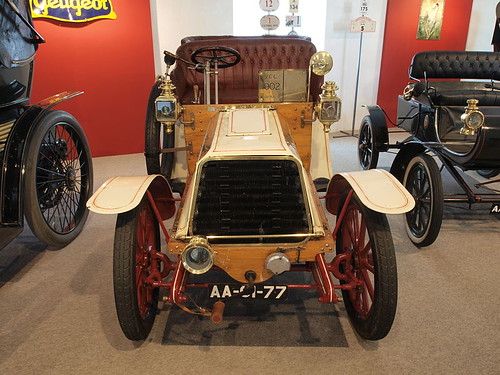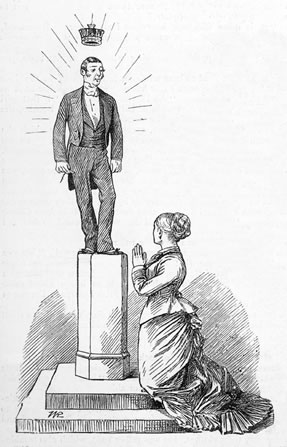Photo from Wikimedia Commons
It is probably because I know the Darracq car so well that I like it. I have owned and driven the 6½, 9, 12, and 24 h.p. cars, and having had several years’ experience of these (and other) cars, I shall endeavour to put some of the good points of them forward and also, perhaps, for the benefit of my readers, I might put some of the bad ones. They exist in every car, but it is hard to find people who will put them in print for fear of getting themselves into hot water with the makers.
My experience of various cars leads me to think that, taking into consideration the price of the Darracq, there are few cars on the market which give one a better value for one‘s money. The chief point of merit is the safety with which one can drive these vehicles on a slippery surface. It was not so very long ago that I experiencel my first sideslip on a Darracq, after several years of driving them in all weathers; and I can honestly say that I have never slipped more than a few feet, whereas on other cars I have had numerous very bad sideslips, and on several occasions the machine turned completely round. The reason of the Darracq‘s steadiness is,I believe, the long wheel base and the situation of the engine. The centre of gravity seems to me to be more in the centre of the car than in any other makes.
The machinery is of very simple construction and is very easily got at. The nuts are so placed that one can undo almost any of them with an ordinary spanner without it being necessary to use a tubular spanner. This applies more especially to the latest patterns, and not to the older models. Nearly every car is fitted with an inspection hole on the side of the base chamber, so that one can at any time ascertain the amount of oil in the crank chamber, and also see that the crank head dips into it. The Darracq has several other advantages, such, for example, as allowing an inspection of the wear in the crank brasses, facility for putting oil in the crank chamber should the pump get out of order, or of baling out any excess of oil. When running out any excess of oil by means of a tap fitted to the bottom of the crank chamber, it is a matter of guesswork, whereas by the Darracq method the exact amount can be seen at a glance, which prevents any mistakes being made. This plxn should, I think, be adopted on every car, as the most important thing to guard against in any motor is the insufficiency of oil in the crank chamber.
As a hill-climber the Darracq is world-famed, and it may not be out of place here to remark that I have a favourite hill near the Crystal Palace up which have tried several well-known cars. The majority have not beaten my old 6½ h.p. Darracq, although many have been three or four times the price and had much larger engines. Several improvements have been made on the latest 24 h.p. car, especially in the lubrication. The oil is forced into the crank chamber by means of the circulating water on which it floats, and consequently the hotter the water becomes (possibly from want of lubrication) the more the oil is forced into the crank chamber. An important feature of the Darracq cars, and one in which they are unlike most of the heavier type of car, is the position of the change-speed handle. This is placed directly under the steering wheel, and to my mind this is the best place possible for the change – speed lever. There is no bending down and forward; it is out of the way, and is very handy. Formerly the driver was able to mount and dismount on the right-hand side, and not disturb the person sitting on his left; but I am sorry to say that this is a thing of the past, as now they have put the brake handle across the entrance, following the example, I suppose, of other makers. The batteries on the 12 h.p. are placed under the bonnet on the left-hand side, which entails having only very short primary wires.
The only fault against this arrangement is that the boxes, as fitted, are made to take dry batteries, and when they run out, either new dry batteries must be bought or a new box made to take accumulators, which, as a rule, are not the same shape. From Part I. of Cars and How to Drive Them, I extract the following in reference to the Mercédes radiator, which I thoroughly endorse. “I am afraid there will be some disastrous results when the French makers copy the Mercédes cooler.” This is what happened in my 24 h.p. Darracq. The tank does not hold a sufficient amount of water, and, unless the car is travelling fast, the water boils over. I have found that if the spark is slightly advanced and the exhaust valves lengthened it helps to cure it, but I do not like this mode of water cooling.
The fan, I find also, draws in the fine dust (especially in the hot weather) on to the very place where it should be kept away from at all costs, namely, the valves and the working parts of the engine. The pump for circulating the water is not quite satisfactory, being too small. The brass flanges which open by a spring placed between them on the centrifugal system perform the duties of a pump, but this, I think, is not so good as the Panhard arrangement. The small flange and spring of the Darracq pump can, however, be changed in less than three minutes, which is very handy, and, like everything fitted to the Darracq, they are very easy to get at. The brass tanks are very nicely made, and I wish other makers would take a “tip” from them. The edges of the tanks are rolled, then soldered, and not riveted. The latter, I find, usually work open after a few months’ use and cause endless trouble.
The foot brake consists of two small brass flanges, which press on either side of the drum brake. In all the other sizes and patterns of the Darracq cars the brakes are very efficient, but in the latest 24. h.p. and 12 h.p. they seem to be fitted too close to the gear-box, and consequently, unless an iron plate is fitted between the two, the brake drum is liable to get covered in grease. Sometimes this, too, happens with the back wheels, particularly if the advice, as given in Darracq’s notes on the car, is followed, i.e., “to put oil in the differential box.” I always put plenty of grease, especially as the bearings on the outside of the axle have separate oil holes, and do not require any lubricant to run through the live axle from the differential box for their oiling.
—Cars and How to Drive Them Part II (1905)





